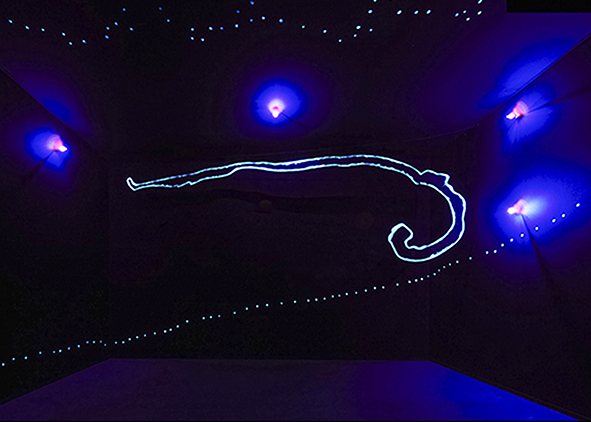Lucio Fontana and the Architecture
DOI:
https://doi.org/10.19229/2464-9309/2252017Keywords:
informal art, spatialism, architectural rationalismAbstract
This article explores the Spatialism in architectural terms, which is at the base of Lucio Fontana’s work after the Second World War. A fundamental and lesser-known aspect of the artist’s work, developed since 1949, is the creation of ‘Ambienti Spaziali’, really and truly architectural spaces that test the perception and often even the sense of balance of visitors. Thus, the article highlights Fontana’s figure as an environmental artist, investigating the artist’s most intimate work and poetics, a topic often neglected by international critics and not highly considered by the most authoritative sources.
Downloads
Article Metrics Graph
References
Ballo, G. (1982), Lucio Fontana – Catalogo della mostra, Sala Comunale d’Arte contemporanea, Rimini.
Blasi, V. (2009), Architetture del bianco – Viaggio teorico-creativo attorno alle lingue, Gangemi Editore, Roma.
Campiglio, P. (1999), Lucio Fontana – Lettere 1919-1968, Skira, Milano, pp. 217-218.
Manifiesto Blanco, Buenos Aires, Ottobre 1946.
Manifesto Tecnico dello Spazialismo, Milano (1951), in Crispolti, E. (2006), Lucio Fontana – Catalogo ragionato di sculture, dipinti, ambientazioni, Skira, Milano.
Perogalli, C. (1957), “Architettura, ambiente, sintesi artistica nella Milano postbellica”, in Aspetti, problemi, realizzazioni di Milano – Raccolta di scritti in onore di Cesare Chiodi, Giuffré, Milano.
Venanzi, M. (2011-2012), Fontana e lo spazio – Aspetti innovativi dalle opere ambientali di Lucio Fontana, Venezia.
Zevi, B. (1948), Saper vedere l’architettura, Einaudi Editore, Torino.

Downloads
Published
How to Cite
Issue
Section
License
This Journal is published under Creative Commons Attribution Licence 4.0 (CC-BY).
License scheme | Legal code
This License allows anyone to:
Share: copy and redistribute the material in any medium or format.
Adapt: remix, transform, and build upon the material for any purpose, even commercially.
Under the following terms
Attribution: Users must give appropriate credit, provide a link to the license, and indicate if changes were made; users may do so in any reasonable manner, but not in any way that suggests the licensor endorses them or their use.
No additional restrictions: Users may not apply legal terms or technological measures that legally restrict others from doing anything the license permits.
Notices
Users do not have to comply with the license for elements of the material in the public domain or where your use is permitted by an applicable exception or limitation.
No warranties are given. The license may not give users all of the permissions necessary for their intended use. For example, other rights such as publicity, privacy, or moral rights may limit how you use the material.


















































































